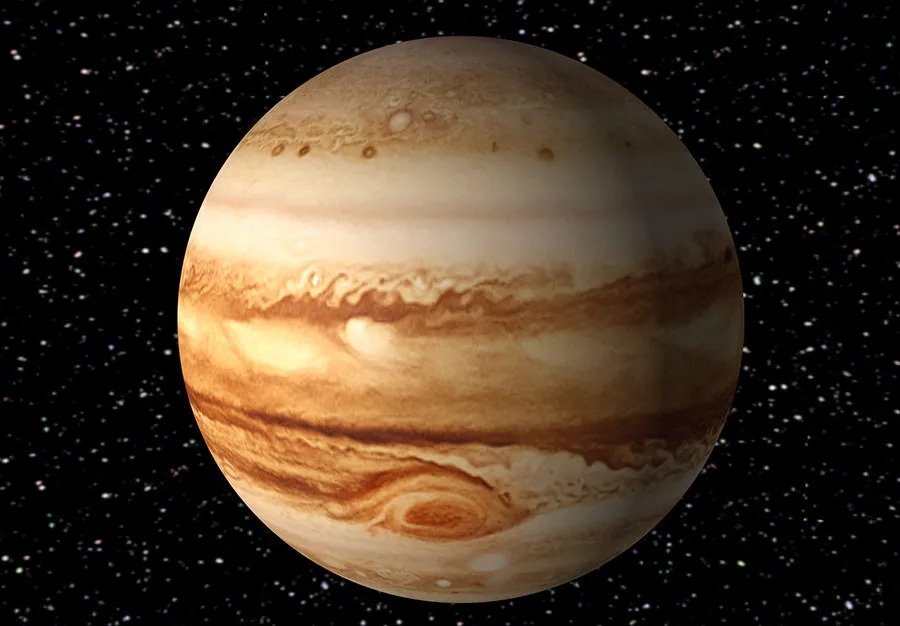The researchers concluded that Jupiter absorbed numerous planetary embryos in the early stages of evolution. Scientists suggested that it was formed four times farther from the Sun than it is now.

New data on the structure of Jupiter
Scientists from a number of European universities have recently concluded that the complex internal structure of the largest gas giant in the Solar System indicates that its history should be revised.
Studies of the 90s testified that the internal structure of this giant is more or less uniform. All the heavy elements are closer to its core, and the light ones are near the surface. However, the Juno mission proved that the material inside the planet is not as mixed as it seemed. This is evidenced by many inhomogeneities of the gravitational field recorded by this device. For more information, see the article published in The Astrophysical Journal Letters.
There are many zones inside Jupiter where the material is heavier than it should be. According to scientists, the reason for this may be the enrichment of the planet with heavy elements in the later stages of its formation. But then the giant had to migrate and absorb small bodies on its way.
Jupiter was born far from the Sun
Planetesimals are the embryos of planets that are widespread in the early stages of the existence of the Solar System. They were unstructured clumps of elements of different densities. And these were the ones that the young Jupiter began to absorb.
However, to do this, it had to migrate through the system. Jupiter changed its orbit as a result of interaction with other large bodies. This migration took place relatively quickly by cosmic standards, but it still lasted hundreds of thousands and millions of years.
According to astronomers, in order to absorb a sufficient number of planetesimals, Jupiter’s journey had to be long enough. Protoplanets rich in heavy elements formed in the colder parts of the Solar System. Scientists have calculated that Jupiter must have formed at least four times farther from the Sun than it is now.
The idea of giant migration in the early stages of the existence of the Solar System is not new, but until now it has been based mainly on mathematical models of stability and the general distribution of elements between celestial bodies. Therefore, even today, the specific picture of migration remains contradictory.
According to Рhys.org
Follow us on Twitter to get the most interesting space news in time
https://twitter.com/ust_magazine

